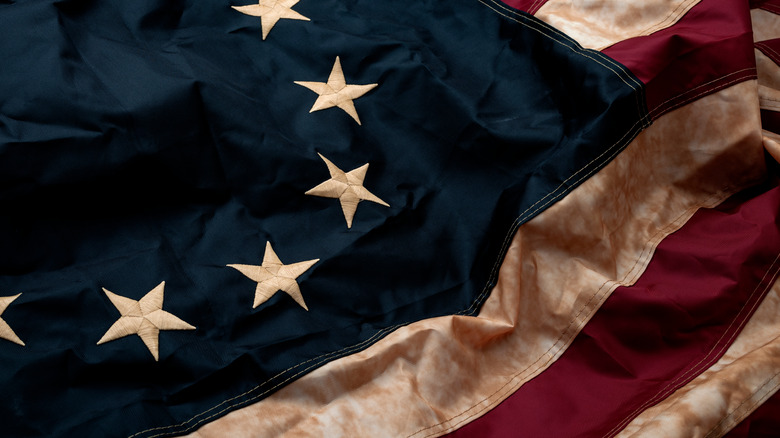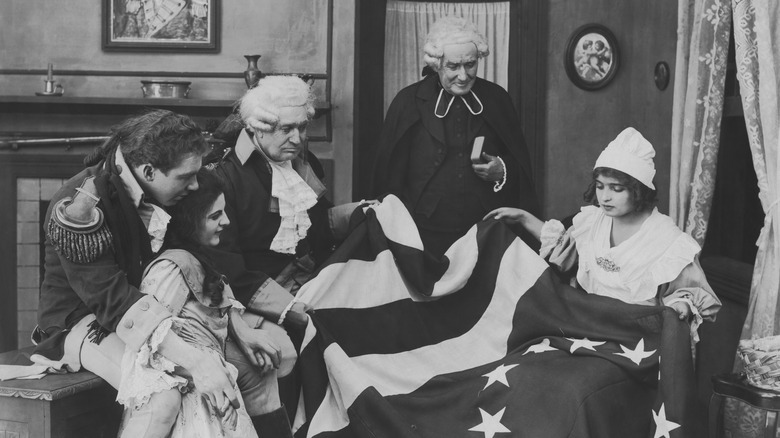The Myth About The American Flag You Need To Stop Believing
History is filled with legends, hoaxes, and outright wishful thinking. For example, you may have believed — and may have even been taught by your elementary school teachers — that the people of Christopher Columbus' time believed the world was flat and that his plan to sail around the world would end in him sailing over the edge. In fact, few people in that day and age believed the Earth was flat, and Columbus and his backers certainly didn't.
The history of the United States of America has its share of historical myths, too. For example, for decades American schoolchildren were taught that a youthful George Washington chopped down a cherry tree and, in an act of virtuous forthrightness, admitted it to his father, who praised his honesty and forgave him. In fact, no such thing happened; it was wholly made up by a biographer years after his death, according to the Mt. Vernon website.
You've also probably believed (and may still believe) that seamstress Betsy Ross sewed the first American flag. That, too, is a historical hoax, although it may be based on the tiniest kernel of truth.
Betsy Ross had little or nothing to do with the first American flag
The American flag we know and love today — 13 alternating horizontal stripes of red and white, a blue canton in the upper-left corner with stars representing each of the states — first emerged in 1777, according to The Washington Post. A century later, Betsy Ross' grandson, William Canby, gave a speech in which he claimed that his ancestor had approached George Washington with some suggestions, including five-pointed stars instead of six-pointed ones, the former being easier to sew, according to National Geographic. Newspapers began repeating Canby's claim as fact, and soon enough, an historical hoax was born.
In fact, Canby had no evidence for his claims except for sworn affidavits from his family members. Ross herself, though she was a seamstress and did sew flags, never claimed in her lifetime to have had anything to do with the flag.
So who did design the flag? Likely Francis Hopkinson, who had designed other insignia used by the nascent nation, and who even submitted a bill to the Continental Congress for his work. Specifically, he asked to be paid in wine, which he apparently never received, according to National Geographic.

